A Comprehensive Guide to Lead Paint Safety for Your Home
This in-depth guide offers a complete overview of lead paint safety, covering the history and health risks, the complex web of federal and local regulations, methods for identifying lead paint in your home, and the critical “Three Pillars” of lead-safe work practices. We’ll also explore alternatives to full paint removal, provide a checklist for deciding between a DIY project and hiring a professional, and answer frequently asked questions to ensure you have all the information needed to create a safe, lead-free environment.
Executive Summary
Lead-based paint, a once-common product, remains a silent and significant hazard in millions of American homes. Although banned for residential use by the U.S. federal government in 1978, the legacy of this toxic material persists, typically hidden beneath layers of newer, safer paint. 1 The primary danger arises not from intact paint, but from the microscopic dust created when lead paint deteriorates or is disturbed during renovation, repair, or painting activities. This invisible dust is the main pathway for exposure, and its health consequences are severe and often irreversible, particularly for young children and developing fetuses. 2
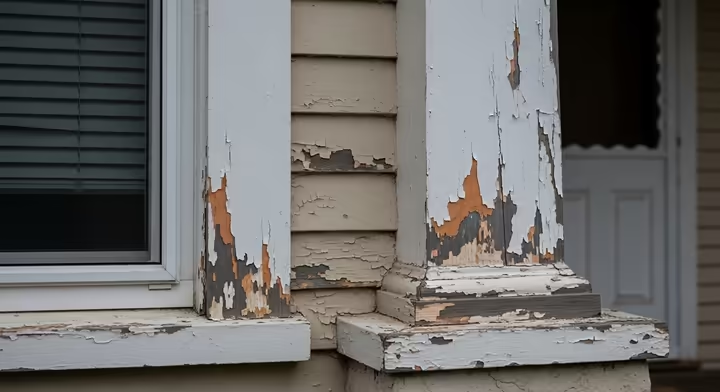
This guide provides a comprehensive overview of lead paint safety for homeowners, landlords, parents, and small contractors. It details the history of lead paint, its prevalence, and the profound health risks it poses. It navigates the complex regulatory landscape, explaining the critical rules set forth by the Environmental Protection Agency (EPA), Occupational Safety and Health Administration (OSHA), and the Department of Housing and Urban Development (HUD), as well as stricter state and local laws. 4
The core of this report is an actionable framework for lead safety built on Three Pillars of Lead-Safe Work Practices: Contain the work area, Minimize dust production, and Clean up thoroughly. Adherence to these principles is paramount. We will cover how to identify lead paint, the essential personal protective equipment (PPE) required for any work, and alternatives to full paint removal. Finally, this guide offers a clear decision-making framework to help you determine when a project can be safely tackled with DIY methods versus when it is essential to hire an EPA Lead-Safe Certified professional. The central takeaway is that while the risks of lead are serious, they are manageable. With the right knowledge and a commitment to safe practices, you can protect your family and create a healthy home environment.
Section 1: The Hidden Danger: What is Lead Paint & Why is it a Risk?
For much of the 20th century, lead was a prized ingredient in paint, valued for its ability to speed up drying, increase durability, maintain a fresh appearance, and resist moisture. This utility, however, concealed a potent neurotoxin. Understanding the history of lead paint, its pervasiveness in our housing stock, and the mechanisms by which it causes harm is the first step toward protecting your family.
1.1 A Brief History of a Toxic Product
The use of lead in paint dates back centuries, but its widespread application in residential homes peaked in the United States in the decades before its health risks were fully acknowledged and regulated. The federal government began to address the issue in 1971, banning lead-based paint in residential projects constructed with federal assistance. 7 The pivotal moment came in 1978, when the U.S. Consumer Product Safety Commission (CPSC) banned the consumer use of paint containing more than 0.06% lead in homes, on toys, and on furniture. 7 Some jurisdictions acted even earlier; New York City, for instance, banned the use of lead paint in residences in 1960. 9
It is crucial to understand that this ban did not mandate the removal of existing lead paint. As a result, it remains on the walls, windows, doors, and trim of millions of homes, often buried under multiple layers of newer, non-leaded paint. 1
1.2 Prevalence: How Common is Lead Paint?
The presence of lead-based paint is directly correlated with the age of a home. According to national surveys by the U.S. Department of Housing and Urban Development (HUD), an estimated 38 million permanently occupied housing units in the United States still contain some lead-based paint. 10 The probability of encountering it increases dramatically in older homes:
- Homes built between 1960 and 1978 : Approximately 24% contain lead-based paint. 11
- Homes built between 1940 and 1960 : Approximately 69% contain lead-based paint. 11
- Homes built before 1940 : Approximately 87% contain lead-based paint. 11
These statistics underscore a simple rule of thumb: if your home was built before 1978, you should assume lead paint is present until testing proves otherwise.
1.3 The Core Hazard: How Lead Exposure Happens
Intact, well-maintained lead paint that is not chipping, peeling, or cracking is generally not an immediate hazard. 12 The danger arises when the paint film is broken. This creates lead-contaminated dust and paint chips, which are the primary sources of exposure. 1 Lead dust is often invisible to the naked eye and can settle on floors, windowsills, toys, and other surfaces, where it can be easily ingested or inhaled. A lead dust equivalent of only three granules of sugar can be enough to poison a child. 15
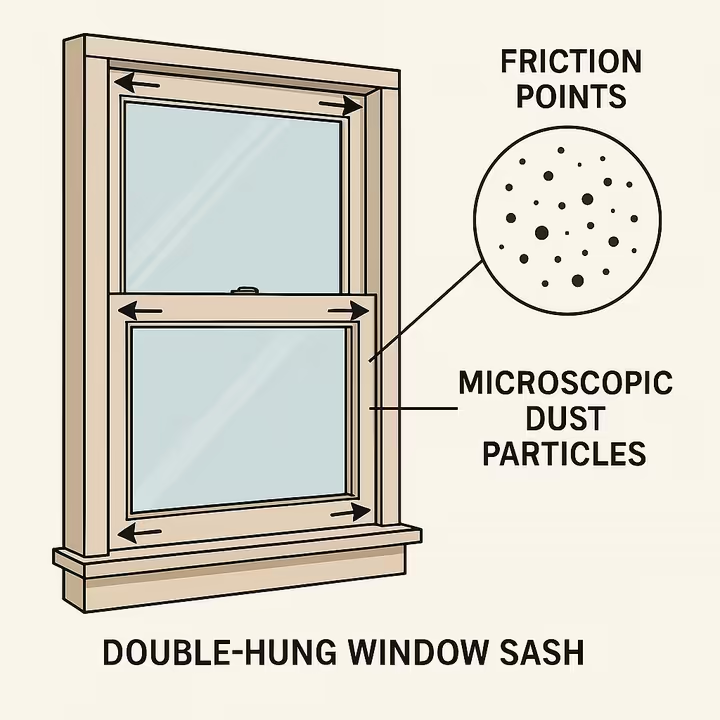
The main pathways of exposure are:
- Ingestion: This is the most common exposure route for children. Due to their natural hand-to-mouth behavior, children touch contaminated surfaces like floors, window wells, or toys and then put their hands, fingers, or the objects themselves into their mouths. 1 Lead paint chips can also taste sweet, which may encourage children to eat them. 14
- Inhalation: Breathing in microscopic lead dust is a major risk, especially for adults and children during unsafe renovation or repair work. Activities like dry sanding, scraping, or using a high-heat gun can release enormous quantities of lead dust into the air. 1
- Contaminated Soil: Exterior lead paint can chip, flake, and peel, contaminating the soil around a home's foundation. Children playing in the yard can get this soil on their hands and toys, leading to ingestion. 12
- Take-Home Exposure: Workers in occupations like construction, painting, or battery recycling can inadvertently bring lead dust home on their work clothes, shoes, skin, and tools. This "take-home lead" can contaminate their cars and homes, creating a significant risk for their families, especially children. 3
1.4 The Devastating Health Consequences
The scientific and medical consensus is unequivocal: there is no safe level of lead exposure . 15 Lead is a cumulative toxicant that affects multiple body systems and is particularly harmful to the most vulnerable among us.
- For Children (Under Age 6): Young children are at the greatest risk because their brains and nervous systems are still developing. They also absorb lead more readily than adults. 2 The damage is often permanent and can lead to a lifetime of challenges. 2 Health effects include:
- Permanent Brain and Nervous System Damage: Lead is a potent neurotoxin that interferes with brain development. 2
- Lowered IQ and Learning Disabilities: Even very low levels of exposure are linked to decreased IQ, diminished academic achievement, and difficulty with learning and attention. 15
- Behavioral Problems: Exposure is associated with Attention-Deficit/Hyperactivity Disorder (ADHD), aggression, and other behavioral issues. 2
- Slowed Growth and Development: Lead can interfere with physical growth and delay puberty. 9
- Hearing and Speech Problems: Exposure can damage auditory nerves and impair speech development. 2
- For Pregnant Women and the Fetus: Lead exposure is a trans-generational threat. Lead stored in a mother's bones from her own childhood exposure can be released during pregnancy and cross the placental barrier, exposing the developing fetus. 3 This can result in:
- Increased risk of miscarriage. 3
- Premature birth or low birth weight. 3
- Harm to the baby’s brain, kidneys, and nervous system. 3
- Subsequent learning or behavior problems in the child. 3
- For the mother, lead exposure increases the risk of high blood pressure during pregnancy. 9
- For Adults: While adults are less susceptible than children, exposure can still cause serious health problems, especially with chronic or occupational exposure. 26 These include:
- Cardiovascular Effects: Increased blood pressure and risk of hypertension. 19
- Reproductive Problems: Decreased fertility in both men and women, and adverse effects on sperm. 23
- Neurological Effects: Memory and concentration problems, mood disorders, headaches, and pain or tingling in the hands and feet. 23
- Other Effects: Kidney damage, digestive problems, and muscle and joint pain. 23
- For Pets: Our animal companions are also at risk. Dogs and cats can be poisoned by ingesting lead paint chips or inhaling dust created during renovations. Symptoms can include vomiting, diarrhea, lethargy, loss of appetite, anxiety, and neurological signs such as seizures or a wobbly gait. 28
The continuous downward revision of what constitutes a "dangerous" blood lead level by agencies like the Centers for Disease Control and Prevention (CDC) and HUD reflects the growing scientific certainty that any exposure carries risk. 6 This progression from defining a "level of concern" to acknowledging that there is "no safe level" underscores the importance of a prevention-first mindset. For homeowners, this means the goal should not be merely to stay below a legal limit, but to prevent all exposure possible through the rigorous safety practices outlined in this guide.
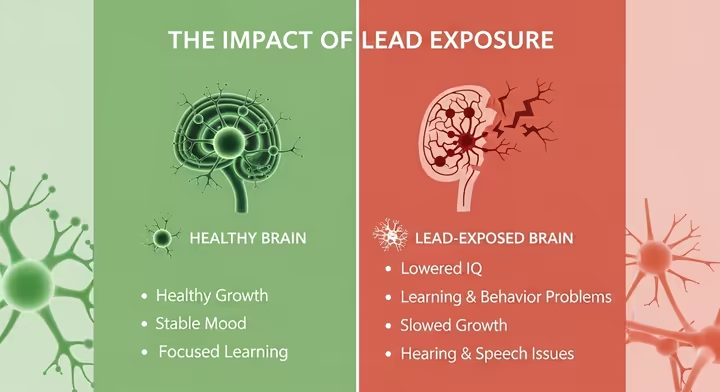
Section 2: The Regulatory Landscape: Rules You Must Know
Navigating the rules surrounding lead paint can be confusing. Different government agencies have different regulations that apply to different situations. While a homeowner performing work on their own occupied residence is generally exempt from federal renovation rules, it is crucial to understand the legal framework. 30 This knowledge is essential for anyone who is a landlord, property manager, or is hiring a contractor, as professionals are legally bound by these standards.
The regulatory landscape is a patchwork where federal law provides a minimum standard, a floor, not a ceiling. Many states and cities have enacted their own, often stricter, laws. This makes it imperative for anyone undertaking a renovation project in a pre-1978 home to research their local requirements in addition to the federal rules.
2.1 The Federal Foundation: EPA, OSHA, and HUD
Three key federal agencies form the foundation of lead paint regulation in the United States. Each has a distinct role and focus.
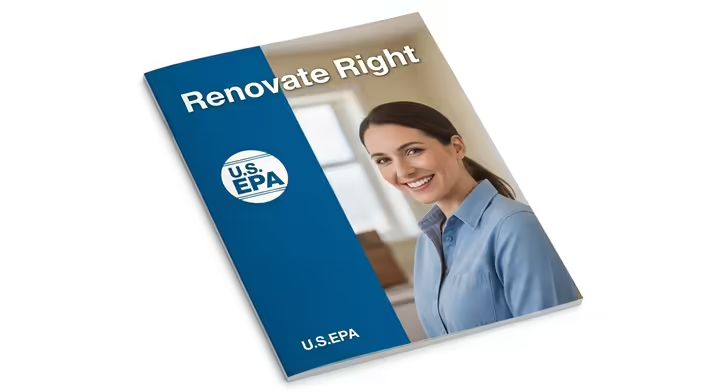
Table 1: Federal Lead Safety Regulations at a Glance
| Agency | Regulation | Who/What It Protects | Key Requirements |
|---|---|---|---|
| EPA (Environmental Protection Agency) | RRP Rule (Renovation, Repair, and Painting) | Occupants of pre-1978 homes and child-occupied facilities during renovation. | Requires Certified Firms and Certified Renovators . Mandates lead-safe work practices (containment, dust control, cleaning verification). Requires distribution of "Renovate Right" pamphlet. 4 |
| OSHA (Occupational Safety and Health Admin.) | Lead in Construction Standard (29 CFR 1926.62) | Workers who may be occupationally exposed to lead. | Sets Permissible Exposure Limit (PEL) and Action Level (AL) for airborne lead. Mandates worker training, PPE, hygiene facilities, and medical surveillance. 5 |
| HUD (Dept. of Housing and Urban Development) | Lead Safe Housing Rule (LSHR) | Residents of pre-1978 federally assisted housing. | Requires hazard evaluation and control. Triggers response when a child has an Elevated Blood Lead Level (EBLL) . Often has stricter standards than EPA's RRP Rule. 6 |
U.S. Environmental Protection Agency (EPA): The RRP Rule
The EPA's Renovation, Repair, and Painting (RRP) Rule is the primary federal regulation governing how work is done in older homes. Its purpose is to protect residents from lead dust created during renovation activities. 30
- Who It Applies To: The RRP Rule applies to anyone who performs renovation, repair, or painting projects for compensation. This includes contractors, painters, electricians, plumbers, property managers, and landlords working on their rental units. 4 It does not generally apply to a DIY homeowner working on their own home where they live, unless they operate a child care center there or are a "flipper" who renovates homes for profit. 30
- Trigger Thresholds: The rule is triggered by the disturbance of painted surfaces greater than 6 square feet per room on the interior or 20 square feet on the exterior of a pre-1978 home or child-occupied facility. 32
- Core Requirements:
- Firm Certification: The company or sole proprietor must be registered as an EPA Lead-Safe Certified Firm . 4
- Certified Renovator: Each job must be assigned to and overseen by an individual who is an EPA-Certified Renovator , having completed a specific training course. 4
- Pre-Renovation Education: Before work begins, the firm must provide the owner and/or occupants with the EPA's "Renovate Right" pamphlet and obtain a signed acknowledgment of receipt. 32
- Lead-Safe Work Practices: The work must follow the prescribed methods for containment, dust minimization, and cleanup, which are detailed in Section 4 of this guide. 4
- Penalties: The EPA takes non-compliance seriously. Fines can be as high as $44,792 per violation, per day , and can include legal action and loss of certification. 4
Occupational Safety and Health Administration (OSHA): Protecting Workers
While the EPA's rule protects residents, OSHA's Lead in Construction Standard (29 CFR 1926.62) protects the workers themselves from the dangers of occupational lead exposure. 5 This standard applies to all construction work where an employee may be exposed to lead, including painting, demolition, and renovation. 5
- Exposure Limits: OSHA sets a Permissible Exposure Limit (PEL) for airborne lead at 50 micrograms per cubic meter of air (50μg/m3) averaged over an 8-hour workday. It also establishes an Action Level (AL) of 30μg/m3 . If worker exposure meets or exceeds the Action Level, the employer must implement a range of protective measures. 5
- Employer Mandates: Key requirements for employers include performing air monitoring to assess exposure levels, providing medical surveillance (including blood lead testing), establishing hygiene facilities (showers, change areas), providing comprehensive worker training, and supplying appropriate Personal Protective Equipment (PPE) at no cost to the employee. 5
U.S. Department of Housing and Urban Development (HUD): Protecting Residents in Assisted Housing
HUD's Lead Safe Housing Rule (LSHR) applies specifically to pre-1978 "target housing" that is federally owned or receives federal assistance, such as public housing or Section 8 project-based rentals. 6
- Elevated Blood Lead Level (EBLL) Response: A key component of the LSHR is its response protocol. As of a January 2025 notice, HUD lowered its EBLL threshold for children under age 6 to 3.5 micrograms per deciliter (3.5μg/dL) , aligning with the CDC's Blood Lead Reference Value (BLRV). 6 When a child living in a covered property has a blood lead level at or above this threshold, it triggers a requirement for the property owner to conduct an environmental investigation and control any identified lead-based paint hazards. 6
- Stricter Standards: In many cases, HUD's requirements are more stringent than the EPA's RRP Rule. For example, HUD's "de minimis" level for paint disturbance that triggers lead-safe practices is smaller ( 2 square feet per room vs. the EPA's 6 square feet). Furthermore, HUD often requires independent clearance testing by a certified professional after work is complete, which involves lab-analyzed dust samples, rather than the simpler cleaning verification procedure allowed by the RRP Rule. 31
2.2 State and Local Laws: The Regulatory Patchwork
It is a critical mistake to assume that following federal law is sufficient. Many states and municipalities have established their own lead laws that are significantly more protective. This creates a complex compliance environment where the strictest applicable rule must be followed.
- California: California has some of the most stringent lead regulations in the nation.
- Worker Protection: Cal/OSHA, the state's occupational safety agency, has set an airborne lead PEL of 10μg/m3 and an Action Level of 2μg/m3 , five and fifteen times stricter, respectively, than the federal OSHA limits. 40
- Contractor Certification: Contractors must be certified by the California Department of Public Health (CDPH) in addition to meeting EPA requirements. 41
- Housing Laws: State law makes it a violation to maintain a lead hazard, and mandates specific disclosures for property sales and leases. 41
- Massachusetts: The Massachusetts Lead Law is heavily focused on preventing childhood exposure.
- Zero Tolerance for Hazards: The law requires the removal or covering of all lead paint hazards (including intact paint on chewable surfaces like windowsills) in any pre-1978 home where a child under age 6 resides. This is a much higher standard than just fixing deteriorated paint. 43
- Anti-Discrimination: The law explicitly forbids landlords from evicting or refusing to rent to families with children under 6 because of the presence of lead paint. The responsibility to make the unit lead-safe falls on the owner. 43
- New York City: NYC has implemented aggressive local laws to combat lead poisoning.
- Lowered LBP Definition: Local Law 66 of 2019 redefined lead-based paint as any paint with 0.5 mg/cm2 of lead or more, which is half the federal standard of 1.0 mg/cm2. This means many more surfaces in NYC are now legally considered lead-based paint hazards. 46
- Mandatory Inspections: Local Law 31 of 2020 requires owners of residential buildings built before 1960 to have every unit inspected for lead-based paint with an XRF analyzer by August 9, 2025. 46
This trend toward stricter standards is not random; it is driven by the mounting scientific evidence of lead's harm at ever-lower levels. For property owners and contractors, this means that simply meeting today's minimum legal requirement may not be sufficient for long-term liability protection. Adopting the most stringent standards available as a best practice is a forward-thinking approach that anticipates future regulatory changes and provides the greatest protection for residents.
2.3 International Perspective: The Global Push to Ban Lead Paint
The effort to eliminate lead paint is a global health priority. The World Health Organization (WHO) identifies lead as one of ten chemicals of major public health concern and works with the UN Environment Programme to eliminate lead paint worldwide. 20 In Europe, the
European Chemicals Agency (ECHA) has enacted broad restrictions on lead under its REACH regulation. Lead is banned in paint (with very narrow exceptions for restoring historic art and buildings), jewelry, and many other consumer products, reflecting a strong international consensus on the need to remove this toxin from the human environment. 24
Section 3: Identification: How to Know if You Have Lead Paint
Before you can manage the risk of lead paint, you must first determine if it's present in your home. There is a hierarchy of methods for identifying lead paint, ranging from simple educated guesses to definitive scientific analysis. The right method for you depends on your situation, your budget, and your tolerance for risk.
3.1 The First Clue: Age of Your Home
The single most important predictor of lead paint is the year the home was built. As noted previously, the federal ban on residential lead paint took effect in 1978. 1 If your home was built after 1978, it is highly unlikely to contain lead-based paint. If it was built before 1978, the probability is significant and increases the older the home is. 11 This is the easiest and most crucial first step in your assessment.
3.2 Visual Inspection: Reading the Signs
A careful visual inspection can provide strong clues, though it cannot definitively confirm or rule out the presence of lead. Lead paint that is covered by newer layers of non-lead paint will not be visible. 48 However, in areas with deteriorating paint, you can look for these tell-tale signs:

- "Alligatoring": This is the most characteristic pattern of failing lead paint. As it ages and becomes brittle, the paint cracks into a pattern of large, rectangular scales that resembles the skin of an alligator. This is distinct from the fine-line cracking seen in modern latex paints. 13
- Chalking Residue: Lead paint breaks down into a fine, chalky powder over time. Wiping a deteriorating surface with a dark cloth may reveal a white, powdery residue. 48
- Multiple Thick Layers: On friction surfaces like window sashes or door jambs, you may see worn areas exposing many thick, distinct layers of paint, which is common in older homes.
- Check Hidden Areas: To find original paint, inspect places that are often overlooked during repainting projects. Look inside closets, in unfinished basements or attics, or behind heavy appliances like a stove or washing machine. These areas may reveal the original, potentially lead-based, paint layers. 48
3.3 DIY Screening: Using EPA-Recognized Test Kits
For homeowners wanting a quick and inexpensive screening, do-it-yourself (DIY) chemical test kits are an option. These kits are readily available at hardware stores and online. 13
- Recognized Kits: The EPA currently recognizes three test kits that have met its performance criteria for negative results: 3M™ LeadCheck™ (now manufactured by Luxfer Magtech), D-Lead® , and the State of Massachusetts kit. 51
- How to Use Them: The process generally involves using a utility knife to make a small cut or score through all layers of paint down to the substrate. The kit provides a swab containing a chemical reagent (like sodium rhodizonate). The swab is activated by crushing it and then rubbed firmly on the scored area. If lead is present, the swab tip will change color, typically turning pink or red within about 30 seconds. 52 A confirmation card containing a small amount of lead is usually included to verify the swab is working correctly. 53
- Critical Limitations: While useful for initial screening, these kits have significant limitations:
- They are not definitive. The EPA's performance criteria allow for a false negative rate of up to 5% (meaning the kit fails to detect lead that is actually present) and a false positive rate of up to 10% (meaning the kit indicates lead is present when it is not). 51
- They are not legally sufficient for all purposes. Under the RRP Rule, only an EPA-Certified Renovator can use these kits to determine that lead-safe work practices are not needed, and this is only valid if the test result is negative. 51 They cannot be used to certify a property as "lead-free." In HUD-assisted housing, these kits are not recognized for testing at all. 56
- Interference is possible. Certain paint pigments, particularly reds and pinks, can "bleed" onto the swab and obscure the results or cause a false reading. 52

3.4 Professional Testing: The Definitive Answer
For complete certainty, legal compliance, or situations involving high risk (such as a child with an elevated blood lead level), professional testing is the only acceptable option. This must be performed by a state or EPA-certified Lead Inspector or Risk Assessor. 57 There are two primary methods:
- X-Ray Fluorescence (XRF) Inspection: This is the modern gold standard for lead inspection. 59
-
Process:
A certified professional uses a handheld XRF analyzer, which looks like a large radar gun. The device is placed directly on a surface, and it uses X-rays to safely and instantly measure the lead content in all layers of paint without causing any damage.
61
The results are displayed immediately in milligrams of lead per square centimeter (
mg/cm2). 63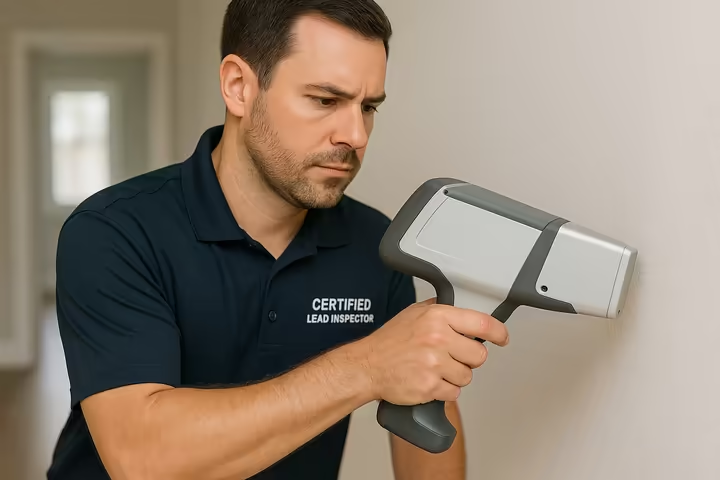
- Advantages: It is non-destructive, provides immediate results, and is highly accurate. It can detect lead buried under many layers of new paint. This is the method required by regulations like NYC's Local Law 31. 46
- Cost: A full-home XRF inspection typically costs between $300 and $700 , depending on the size of the home and location. 64
- Laboratory Paint Chip Analysis: This is the traditional method of testing.
- Process: A certified professional carefully cuts and removes a sample of paint from various surfaces. The sample must include all layers of paint down to the bare wood, plaster, or metal. 63 These samples are carefully cataloged and sent to an EPA-recognized National Lead Laboratory Accreditation Program (NLLAP) laboratory for analysis. 55
- Advantages and Disadvantages: This method is very accurate but has drawbacks. It is destructive, leaving damaged spots that must be repaired. It is also slow, as it can take several days or even weeks to receive results from the lab. 59
- Cost: The lab analysis itself typically costs $30 to $50 per sample , in addition to the professional's time for collection. 64
The choice of testing method should align with your specific needs. A homeowner's simple curiosity might be satisfied with a DIY kit, but a landlord needing to comply with local laws or a family with a sick child requires the definitive, legally-defensible data that only a professional XRF or lab analysis can provide.
Section 4: The Three Pillars of Lead-Safe Work Practices
For any project that will disturb lead-based paint, from a small DIY repair to a full-scale professional renovation, safety hinges on a systematic approach. Simply being "careful" is not enough. Lead-safe work practices are built on three essential and interconnected pillars: Contain the work area , Minimize dust production , and Clean up thoroughly . The failure of any one of these pillars compromises the entire safety effort. Think of it as a three-legged stool: if one leg breaks, the whole thing collapses. Proper containment is useless if you create a massive dust storm inside it, and even the best dust-minimization techniques are worthless without a meticulous final cleanup.
4.1 Pillar 1 - CONTAIN The Work Area
The first goal is to isolate the work area to prevent lead dust and debris from spreading to the rest of the home. This creates a "mini-containment" zone that protects your family and makes the final cleanup far more manageable.
Step-by-Step Interior Containment Checklist:
- Post Warning Signs: Place warning signs at all entrances to the work area. The signs should clearly state "Warning: Lead Work Area" and "Poison: No Smoking or Eating" to prevent anyone not involved in the project from entering. 56 Keep pets out of the area at all times.
- Empty the Area: Remove all movable objects from the room, including furniture, rugs, curtains, toys, and clothing. 67
- Cover Immovable Items: Anything that cannot be removed (e.g., radiators, large built-in cabinets) must be completely wrapped in heavy-duty, 6-mil polyethylene (poly) sheeting and sealed tightly with tape. 69
- Cover the Floor: Lay down at least one layer of 6-mil poly sheeting on the floor. It should extend at least 6 feet beyond the area being disturbed. Securely tape the edges of the sheeting to the baseboards or walls to create a sealed basin. 69 For exterior work, the sheeting should extend 10 to 20 feet out from the foundation to catch all falling debris. 69
- Seal All Openings:
- HVAC Systems: Turn off all forced-air heating, ventilation, and air conditioning (HVAC) systems that service the area. Use poly sheeting and tape to completely seal off all air intake and supply vents to prevent dust from being drawn into the system and circulated throughout the house. 68
- Windows and Doors: Close and seal all windows and any doors that will not be used for entry or exit. 56
- Create a Controlled Entry: For the doorway you will use to enter and exit, create an "airlock" to contain dust. This is done by hanging two overlapping sheets of poly. The first sheet is taped around the entire doorframe and has a vertical slit cut down the middle for passage. A second, solid sheet is taped only along the top of the frame, acting as a flap over the slit in the first sheet. This system helps keep dust from escaping when you pass through. 68
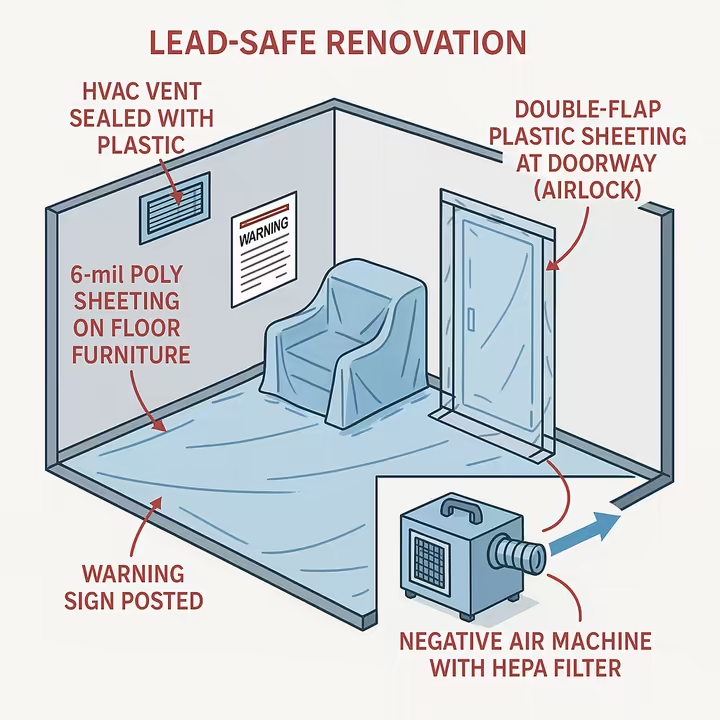
4.2 Pillar 2 - MINIMIZE Dust Production
Once the area is contained, the next principle is to perform the work in a way that creates as little dust as possible. This is the golden rule of lead-safe work. High-speed, aggressive, and dry removal methods are extremely dangerous and are prohibited by federal regulations.
Prohibited High-Dust and High-Heat Methods
Under federal regulations from the EPA and HUD, the following methods are strictly prohibited for paint removal because they generate massive quantities of fine, easily inhaled lead dust or create toxic lead fumes 72 :
- Open-flame burning or torching.
- Machine sanding or grinding without a HEPA vacuum attachment.
- Uncontained hydroblasting or high-pressure washing.
- Abrasive blasting or sandblasting without a HEPA vacuum attachment.
- Heat guns operating above 1100 degrees Fahrenheit or that char the paint.
- Dry scraping or dry sanding (except for very small, specified areas, such as within one foot of an electrical outlet).
- Paint strippers containing methylene chloride, which is a hazardous chemical in its own right. 72
Approved Low-Dust and Wet Methods
The safest techniques are all designed to keep the paint and dust wet, preventing it from becoming airborne.
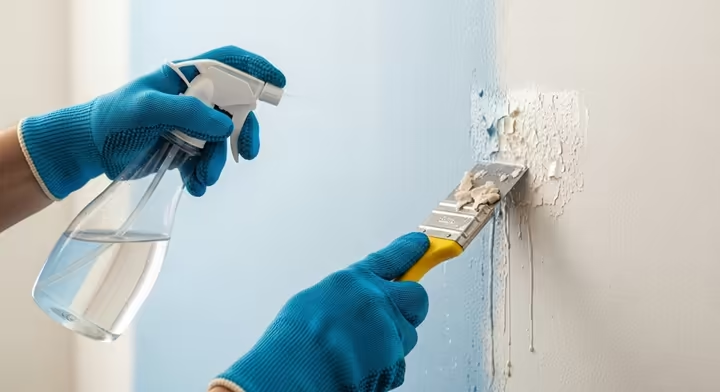
- Wet Scraping and Wet Sanding: This is the cornerstone of DIY dust control. Before scraping or sanding by hand, mist the surface with water from a simple spray bottle. This causes the paint dust and chips to clump together and fall directly onto the plastic sheeting on the floor instead of floating in the air. 70 Keep the surface damp as you work.
- Low-Temperature Heat Guns: A heat gun operating below 1100°F can be used to soften paint for easier scraping. The paint should be heated only until it is soft enough to be removed with a scraper; it should never be heated to the point of charring or smoking, as this releases toxic lead fumes. 74
- Chemical Strippers: Caustic paste or gel-based paint strippers can be effective for removing multiple layers of paint. They are applied to the surface, allowed to sit, and then the softened paint is scraped off. Always choose a product that is methylene chloride-free, ensure adequate ventilation, and follow all manufacturer instructions for use and safety, including wearing appropriate gloves and eye protection. 31
- Power Tools with HEPA Attachments: Power sanders or grinders should only be used if they are equipped with a high-quality shroud and attached to a certified HEPA vacuum . This system is designed to capture dust at the point of generation, before it can become airborne. 72 Using a power tool without this attachment is a prohibited practice.
4.3 Pillar 3 - CLEAN Up Thoroughly
A meticulous, multi-step cleanup is non-negotiable. An improper cleanup can leave a room more contaminated than when you started, posing a lingering threat to your family. 77 A simple sweep and mop is dangerously insufficient.
Waste Handling and Disposal
All waste generated during the project, including paint chips, dust, used plastic sheeting, disposable PPE, mop heads, and rags, is considered lead-contaminated.
- Collection: Carefully mist all debris with water to keep dust down. Fold all plastic sheeting with the dirty side inward. Place all waste into heavy-duty, 6-mil plastic bags . Seal each bag tightly using a "gooseneck" tie (twist the top, fold it over, and secure with tape). 78 Double-bagging is a recommended practice. 80
-
Disposal:
Regulations for residential lead waste disposal vary. The EPA generally allows homeowners to dispose of lead debris with their regular household trash.
81
However,
you must check with your local municipal or county solid waste authority for their specific requirements, as local rules may be stricter. 79 Contractors and commercial operations are subject to different, more stringent disposal regulations. 82 Never burn lead-contaminated waste. 77
The Three-Pass Cleaning Sequence
This methodical cleaning process is designed to remove even microscopic lead dust and is the heart of a safe cleanup.
- First Pass: Initial HEPA Vacuum. The first step is to vacuum everything in the contained work area with a certified HEPA vacuum . This includes walls, windowsills, baseboards, and the floor. The goal is to remove all visible dust and debris. 83
- CRITICAL NOTE: A standard household vacuum or shop-vac must never be used. Their filters are not fine enough to capture microscopic lead particles. Instead, they will act as a "lead dust blower," sucking up particles from the floor and exhausting them into the air you breathe, contaminating the entire house. 77 Only a vacuum with a certified HEPA filter is safe.
- Second Pass: Wet Wash. After the initial vacuuming, all surfaces must be washed.
- Use a two-bucket system: one bucket with a general-purpose household cleaner and warm water, and a second bucket with clean rinse water. 80
- Using disposable rags or paper towels, wash all surfaces, working from high to low (walls, then sills, then baseboards, then floor). 84
- Change your cleaning rags and rinse water frequently to avoid re-contaminating surfaces.
- Third Pass: Final HEPA Vacuum. Once all surfaces have completely dried, perform a final, thorough HEPA vacuuming of the entire area. This final pass captures any remaining lead dust that may have been dislodged or left behind by the wet washing process. 83
Final Verification: Is It Truly Clean?
After the final cleanup, how do you know the area is safe? There are two levels of verification:
- Cleaning Verification: This procedure, which can be performed by an EPA-Certified Renovator, involves a visual inspection to ensure no dust or debris remains. Then, a disposable cleaning cloth is used to wipe a small area of the floor and/or windowsill, and the cloth is compared to a standard "verification card." If the cloth is cleaner than the card, the area passes. 31 This is the minimum standard under the RRP Rule.
- Clearance Testing: This is a much more rigorous and definitive process. An independent, certified Lead Risk Assessor or Inspector takes dust wipe samples from the floor, windowsills, and window troughs. These samples are sent to an NLLAP-accredited laboratory for analysis. The results are compared to federal or local dust-lead hazard standards (e.g., under 100 µg/ft² on floors). 83 This is the only way to be certain that an area is safe for re-occupancy, and it is required for all HUD-funded projects. 31
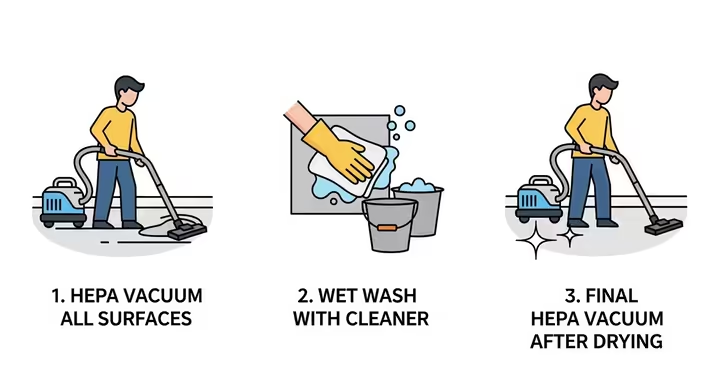
Section 5: Personal Protective Equipment (PPE): Your Non-Negotiable Armor
When you are disturbing lead paint, your body is the last line of defense. Personal Protective Equipment (PPE) is not an optional accessory; it is your essential armor against invisible hazards. Using the correct PPE, and using it properly, is a non-negotiable part of every lead-safe project. Failure to do so can lead to direct exposure and serious health consequences.
5.1 Respiratory Protection: The Most Critical Barrier
The single greatest risk during a renovation is the inhalation of airborne lead dust. Therefore, a high-quality, properly fitted respirator is the most critical piece of PPE.
- NIOSH-Approved Respirator: Only respirators approved by the National Institute for Occupational Safety and Health (NIOSH) should be used. A simple paper dust mask or surgical mask provides zero protection against microscopic lead particles and can give a dangerous false sense of security. 75
- Correct Filter Type (P100 is Best): The filter cartridges on the respirator are what capture the lead particles. They are rated by NIOSH with a letter (N, R, or P) and a number (95, 99, or 100).
- The number indicates filtration efficiency. "100" means the filter is 99.97% efficient at capturing airborne particles. 86
- The letter indicates its resistance to oil-based aerosols. N-series filters are Not resistant to oil; R-series are somewhat Resistant to oil; and P-series are strongly resistant (oil-Proof). 86
- For lead work, a 100-level filter is required . An N95 mask, while common, is not sufficient and must not be used for lead protection. 87
- A P100 filter is the recommended choice because it provides the highest level of particulate protection and is effective against both water-based and oil-based paint aerosols, which can be generated when using a heat gun on old oil-based paint. 87 The filters are typically magenta-colored for easy identification. 86
- Proper Fit is Everything: A respirator is useless if it does not form a perfect seal against your face. Air will simply travel through the path of least resistance, bypassing the filters. To ensure a proper fit:
- The user must be clean-shaven where the mask seals to the skin. Stubble or a beard will break the seal. 88
- A user seal check (both positive and negative pressure checks) must be performed every time the respirator is put on to ensure there are no leaks. 37
For most renovation tasks, a reusable half-mask air-purifying respirator with two P100 cartridges is the appropriate choice. 88
5.2 Full-Body Protection
Protecting your lungs is paramount, but lead dust can also contaminate your skin, hair, and clothing, leading to accidental ingestion or "take-home" exposure for your family.
- Disposable Coveralls: Wear disposable coveralls, such as those made from Tyvek®, over your street clothes. These should have a hood and built-in booties to provide head-to-toe protection. At the end of the workday, these coveralls can be carefully removed and disposed of with other lead-contaminated waste, preventing you from carrying dust into your car or home. 67
- Gloves: Wear disposable nitrile or neoprene gloves to protect your hands from dust and any chemical strippers being used. 70 Tape the cuffs of the gloves to the sleeves of your coveralls to create a complete seal.
- Eye Protection: Wear safety glasses or, for better protection from dust and splashes, indirectly-vented safety goggles. This is especially important when working overhead or using chemical strippers. 70
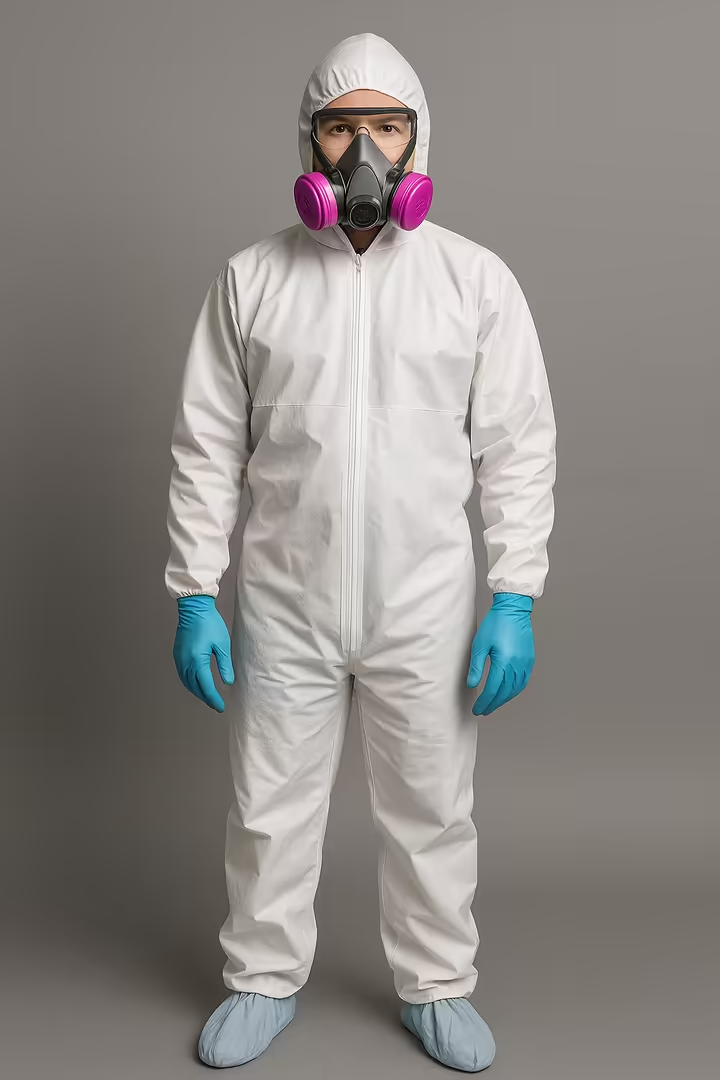
Section 6: Alternatives to Removal & The DIY vs. Pro Decision
While complete removal of lead paint is the most permanent solution, it is not always the most practical or safest option, as the process itself generates hazardous dust. In some cases, managing the lead paint in place through encapsulation or enclosure can be a better choice. This section explores these alternatives and provides a framework for making the critical decision of whether to tackle a project yourself or hire a certified professional.
6.1 Alternatives to Full Removal
Abatement does not always mean removal. Encapsulation and enclosure are two recognized methods for controlling lead paint hazards without physically stripping the paint from the surface. The choice between these methods and full removal is fundamentally a decision about long-term liability and maintenance versus a higher upfront cost.
Encapsulation
Encapsulation is the process of applying a specially formulated, thick, durable, paint-like coating directly over the lead-based paint. This creates a sealed barrier that prevents lead dust and chips from being released. 90
- What It Is: An encapsulant is not just a thick coat of regular paint. It is a specialized product, often an epoxy or polymer-based coating, specifically designed and tested to bond with and seal lead paint. 92
-
Pros:
Encapsulation is generally the least expensive and least disruptive abatement method. It can be applied quickly with minimal dust generation, making it a good option for large, flat surfaces that are in relatively good condition.
93

- Cons: This is considered a temporary solution. The encapsulant can fail if the underlying paint loses its adhesion and peels off, taking the encapsulant with it. Therefore, it is not suitable for surfaces with significant pre-existing damage or for high-friction areas like window sashes or door jambs. Encapsulated surfaces require regular inspection and maintenance to ensure the barrier remains intact. 94 Over time, the costs of inspection and re-application can add up.
Enclosure
Enclosure involves covering the lead-painted surface with a solid, rigid, and permanent barrier. This physically isolates the hazard from the living space. 90
- What It Is: Common enclosure materials include drywall, paneling, or covering an exterior wall with new siding. For a floor, it could involve installing underlayment and new flooring. 91 The enclosure must be durable and sealed at the seams to be dust-tight. 90
-
Pros:
Enclosure is a very durable and long-lasting solution that effectively prevents exposure as long as the barrier is maintained.
91
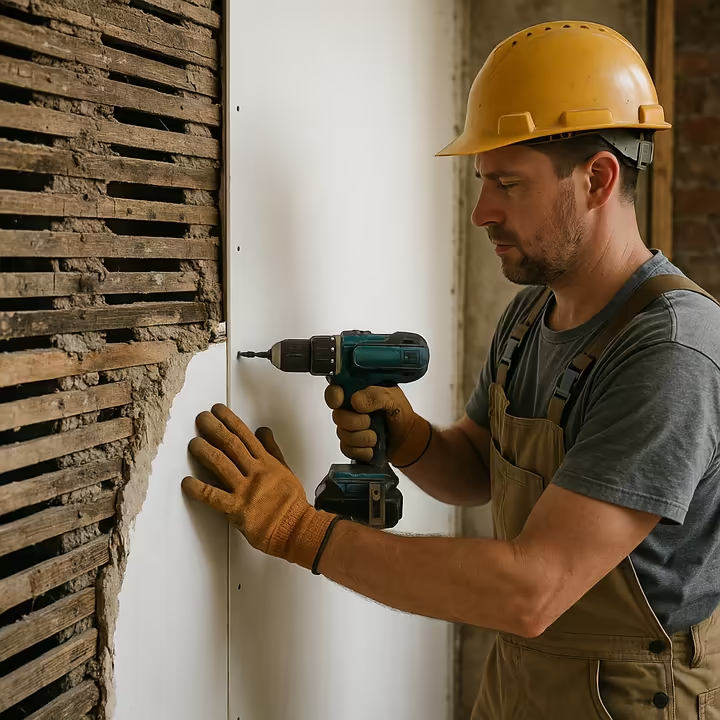
- Cons: The lead paint hazard still exists behind the new surface. Any future renovation or damage to the enclosure could re-expose the hazard. This method is also more expensive than encapsulation and is not practical for all surfaces, particularly those with complex architectural details. The areas of enclosure should be documented so future owners are aware of the hidden hazard. 95
6.2 The Critical Decision: DIY or Hire a Certified Pro?
This is one of the most important decisions a homeowner will make. While the appeal of saving money with a DIY approach is strong, the health risks of getting it wrong are enormous.
The Legal Dividing Line
The first question to ask is simple: Are you being paid for this work?
If the answer is yes, the decision is made for you. Federal law (the EPA's RRP Rule) mandates that any renovation, repair, or painting work performed for compensation on a pre-1978 home or child-occupied facility must be done by an EPA Lead-Safe Certified Firm using Certified Renovators . 4 This applies to:
- General Contractors
- Painters, Plumbers, Electricians
- Landlords working on their rental properties
- Property managers and their maintenance staff
For these individuals, DIY is not a legal option.
Decision Checklist for the True DIY Homeowner
For a homeowner working on their own occupied residence (with no rental units or in-home daycare), the choice is a matter of risk assessment. Use this checklist to guide your decision:
1. What is the scope of the project?
- Small & Simple (Consider DIY): The project is very small, such as carefully repairing a small patch of peeling paint that is less than the EPA's 6 sq. ft. interior threshold. 96
- Large & Complex (Hire a Pro): The project involves large-scale surface disturbance, such as a full kitchen remodel, window replacement, or removing paint from all the trim in a room. Larger projects create exponentially more dust and risk. 98
2. What is the condition of the paint?
- Minor Deterioration (Consider DIY): The paint has a few isolated chips or cracks in one area.
- Widespread & Severe Deterioration (Hire a Pro): The paint is alligatoring, peeling, and flaking across multiple surfaces. This indicates a significant, pre-existing hazard that requires professional containment and cleanup strategies. 98
3. Who lives in the home?
- No Vulnerable Individuals (Lower Risk): The household consists only of healthy, non-pregnant adults.
- Children or Pregnant Women Present (Highest Risk - Hire a Pro): If a child under the age of 6 or a pregnant woman resides in the home, the risk of severe, irreversible health damage is extremely high. The slightest mistake in containment or cleanup could have devastating consequences. In this scenario, hiring a certified professional is the most responsible choice. 99
4. What is your commitment to safety protocols?
- Fully Committed (Consider DIY): You have thoroughly researched all the steps in this guide and are willing and able to purchase all the necessary PPE and materials (HEPA vacuum, 6-mil plastic, P100 respirator, etc.). You are committed to meticulously following every step of containment, dust minimization, and cleanup, no matter how tedious.
- Unsure or Unable (Hire a Pro): If you are tempted to cut corners, to use a shop-vac instead of a HEPA, to skip sealing the vents, or to do a quick cleanup, you should not attempt the work yourself. The safety system only works if every component is executed perfectly. 77
Ultimately, while a small, contained project may be within the capabilities of a well-informed and cautious DIYer, the potential for catastrophic error means that for most situations, especially in homes with children, hiring an EPA Lead-Safe Certified Firm is the safest and most prudent course of action.
Section 7: Special Scenarios & Cost Analysis
While the core principles of lead safety remain constant, certain situations like exterior work or managing rental properties require special considerations. Furthermore, understanding the potential costs of professional inspection and abatement is essential for proper planning and budgeting.
7.1 Exterior Work
Working on the exterior of a home presents unique challenges for containment. The goal is the same, prevent the spread of lead dust and debris, but the environment is less controllable.
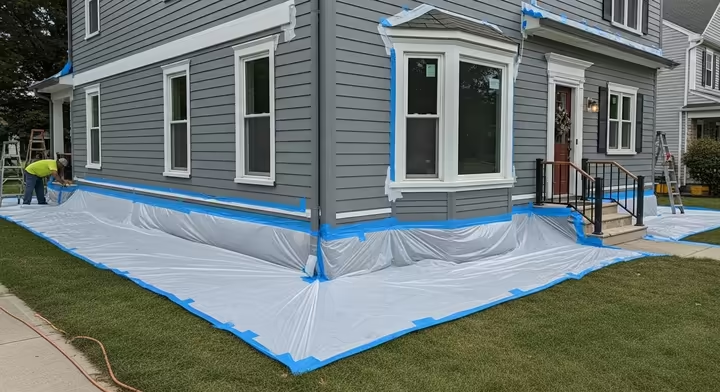
- Containment: The ground is the primary area of concern. Lay heavy-duty (6-mil) plastic sheeting on the ground, extending at least 10 feet from the foundation of the work area. For multi-story buildings, this should be extended further, up to 20 feet. 69 The sheeting should be secured to the foundation and weighted down at the edges to prevent it from blowing away. This "basin" will catch falling paint chips and dust. 101
- Protect the Surroundings: Cover any nearby gardens, sandboxes, and children's play equipment with plastic sheeting. Close all windows and doors of the house and consider covering them with plastic to prevent dust from blowing inside. 71
- Weather Considerations: Do not perform exterior lead work on windy days. High winds can carry lead dust over long distances, contaminating neighboring properties and rendering your containment useless. 100
- Neighbor Notification: It is a good practice and often a local requirement to inform your immediate neighbors before you begin exterior work. This allows them to take precautions, such as closing their windows and keeping children and pets indoors. 71
7.2 Multi-Unit Dwellings and Rentals
Landlords and property managers have significant legal and ethical responsibilities when it comes to lead paint. Unlike a DIY homeowner, they are legally bound by federal, state, and local regulations.
- Compliance is Mandatory: As mentioned, landlords and their agents are considered to be working for compensation and must comply with the EPA's RRP Rule. This means hiring or being an EPA Lead-Safe Certified Firm and following all lead-safe work practices. 4
- Federal Disclosure Rule: Before a lease is signed or renewed for a pre-1978 property, landlords must:
- Provide tenants with the EPA's "Protect Your Family From Lead In Your Home" pamphlet. 103
- Disclose any known information about lead-based paint or lead hazards in the unit or common areas. 103
-
Include a "Lead Warning Statement" in the lease agreement.
103
These records must be kept for at least three years.105
- Tenant Notification for Renovations: Tenants must be given notice before any renovation work that will disturb painted surfaces begins. 104
- Common Area Contamination: Special care must be taken when working in common areas like hallways, stairwells, or laundry rooms. A poorly contained project in a hallway can easily contaminate multiple apartment units as dust is tracked in and out by residents. 69
7.3 Cost Analysis: Budgeting for Lead Safety
Addressing lead hazards professionally involves costs for both inspection and abatement. These costs can vary significantly based on the size and location of the home, the extent of the hazard, and the method chosen.
Professional Inspection Costs
- XRF Inspection: A full-home inspection using a handheld XRF analyzer by a certified inspector is the most common and reliable method. The average cost ranges from $300 to $700 . 64
- Dust, Soil, or Water Sampling: If you require specific lab analysis of dust wipes or other environmental media, expect to pay an additional $25 to $150 per sample on top of the inspection fee. 64
- Risk Assessment: A more comprehensive risk assessment, which identifies the severity and sources of lead hazards and provides a strategy for abatement, is more expensive, typically ranging from $500 to $1,500 . 108
Professional Abatement and Remediation Costs
The cost to make a home lead-safe is highly variable. The following figures are based on national averages and are typically quoted per square foot of surface area being treated.
-
Overall Range:
The general cost for professional lead paint abatement falls between
$8 and $17 per square foot
.
108
For an average-sized home (1,500-2,000 sq. ft.), a full abatement project can easily cost
$10,000 to $30,000 or more. 110 - Cost by Method:
- Encapsulation: This is the most affordable option, typically costing $4 to $10 per square foot . 65
- Enclosure: This mid-range option generally costs $8 to $13 per square foot . 65
- Full Removal (Stripping/Scraping): This is the most labor-intensive and expensive method, usually costing $10 to $17 per square foot . 65
- Replacement: In some cases, it is more cost-effective to completely remove and replace a component (like old windows or doors) rather than strip the paint. This cost is highly variable, from $1,000 to over $15,000 depending on the components being replaced. 108
While these costs can seem daunting, financial assistance in the form of grants or low-interest loans may be available through state or local health departments or housing agencies, particularly for low-income families with young children. 45
Section 8: Frequently Asked Questions (FAQ)
This section provides clear, concise answers to some of the most common questions about lead paint safety.
1. Can I just paint over lead paint with regular paint?
No. Simply applying a new layer of conventional paint over lead-based paint is not a safe or permanent solution. The new paint will adhere to the old paint, and when the underlying lead paint eventually chips or peels, it will take the new paint with it, re-exposing the hazard. To safely cover lead paint, you must use a specially formulated encapsulant, which is a thick, durable coating designed to create a long-lasting barrier. This is a specific abatement method and is very different from standard painting.92
2. Is lead paint only a problem if it's chipping or peeling?
Deteriorating paint is the most immediate and dangerous hazard because it actively creates dust and accessible chips.1 However, even intact lead paint can be a problem. Paint on friction surfaces, such as the channels of a double-hung window or the edge of a door and its frame, can grind into dust with normal use. Furthermore, any intact paint remains a potential hazard that will be disturbed during future repairs or renovations.12
3. What's the real difference between a HEPA vacuum and a regular shop-vac?
The difference is critical and relates to the filter's ability to capture microscopic particles. A HEPA (High-Efficiency Particulate Air) filter is certified by law to capture 99.97% of particles that are 0.3 micrometers in size. Lead dust particles fall into this size range. A regular shop-vac or household vacuum lacks this level of filtration. When used on lead dust, it will capture the larger chips but exhaust the most dangerous, invisible particles back into the air, effectively turning the vacuum into a lead dust blower and contaminating the entire area.77
4. How do I legally and safely dispose of lead paint debris?
For a homeowner doing a DIY project, lead waste can generally be disposed of with regular household trash. The recommended practice is to mist all debris with water, place it in a heavy-duty (6-mil) plastic bag, seal the bag tightly (with a gooseneck tie), and then double-bag it.79 However, disposal rules can vary by location. You
must contact your local sanitation or public works department to confirm their specific requirements. Contractors are often subject to stricter state and federal disposal regulations. 82
5. Do I have to test for lead before I renovate my pre-1978 home?
No, you are not required to test. Under the EPA's RRP Rule, contractors (and by extension, informed DIYers) have two options for pre-1978 properties: 1) Test all affected surfaces to prove that no lead-based paint will be disturbed, or 2) Assume lead-based paint is present and follow all lead-safe work practices for containment, dust control, and cleanup. Many professionals choose to assume lead is present to avoid the time and expense of testing, and proceed directly with safe practices.4
6. My contractor says they've done this for years and don't need to be "certified." Is that okay?
Absolutely not. It is a violation of federal law for any company, firm, or individual working for compensation to perform renovation, repair, or painting activities that disturb lead paint in pre-1978 housing or child-occupied facilities without being an EPA Lead-Safe Certified Firm. Hiring an uncertified contractor puts your family at risk and can expose both you and the contractor to significant legal liability and fines from the EPA.4
7. What are my rights as a renter in a pre-1978 building?
You have significant rights under the federal Lead Disclosure Rule. Before you sign or renew a lease, your landlord must: disclose any known lead-based paint or hazards, provide you with any available records or reports on lead, give you the "Protect Your Family From Lead In Your Home" pamphlet, and include a lead warning statement in your lease. They must also notify you before any renovations that could disturb paint.103 Many states and cities provide even stronger tenant protections.
8. Are the DIY lead test kits from the hardware store reliable?
They are useful as an initial screening tool but are not 100% reliable. The EPA recognizes a few kits that have a low rate of false negatives (failing to detect lead when it's present), but they can still give false positives (indicating lead when it's not there).51 They are not considered legally definitive, cannot be used to certify a home as lead-free, and are not a substitute for professional testing when absolute certainty is required.59
9. I hear about an "action level" for lead. What is that?
The "Action Level" is a term from the OSHA Lead in Construction Standard that protects workers. It is an airborne concentration of lead of 30 micrograms per cubic meter (30μg/m3). If air monitoring shows that workers are exposed to lead at or above this level, their employer is required to initiate a series of actions, including more frequent air monitoring, medical surveillance (blood tests), and specific training.37 It is a trigger for protective measures for workers, distinct from the EPA rules that protect residents.
10. My dog ate some paint chips. Does my pet need to be tested for lead?
Yes, you should consult your veterinarian immediately. Pets are susceptible to lead poisoning, and symptoms can include vomiting, diarrhea, lethargy, and even seizures. If you have confirmed or suspected lead hazards in your home and your pet is showing symptoms, a veterinarian can perform a blood test to check for lead poisoning and recommend treatment if necessary.29
Glossary
- Abatement: A set of measures designed to permanently eliminate lead-based paint hazards. This can include removal, enclosure, or encapsulation.
- Action Level (AL): An occupational exposure limit set by OSHA. For lead, it is an airborne concentration of 30 micrograms per cubic meter (30μg/m3) averaged over 8 hours. Exceeding this level triggers required employer actions like medical surveillance and increased monitoring. 38
- BLRV (Blood Lead Reference Value): A value used by the CDC to identify children with blood lead levels that are higher than most children's levels. The current BLRV is 3.5 micrograms per deciliter (3.5μg/dL). It is a screening tool, not a statement of a "safe" level. 19
- Certified Renovator: An individual who has successfully completed an EPA- or state-accredited training course in lead-safe work practices as required by the RRP Rule. 35
- Containment: The process of sealing off a work area using plastic sheeting and tape to prevent the escape of any dust and debris generated during renovation. 69
- EBLL (Elevated Blood Lead Level): The specific blood lead level in a child that triggers a mandatory public health or housing agency response, such as an environmental investigation of the child's home. HUD's EBLL is 3.5 µg/dL. 6
- Encapsulation: An abatement method where a special liquid coating (an encapsulant) is applied over lead-based paint to create a durable, sealed barrier. 90
- Enclosure: An abatement method where a lead-painted surface is covered with a solid, rigid barrier, such as drywall or paneling. 95
- HEPA (High-Efficiency Particulate Air): A type of air filter that is certified to remove at least 99.97% of airborne particles that are 0.3 micrometers in diameter. A HEPA-filtered vacuum is essential for safe lead dust cleanup. 85
- LBP (Lead-Based Paint): Paint or other surface coatings that contain lead in amounts equal to or exceeding 1.0 milligram per square centimeter (1.0 mg/cm2) or 0.5% by weight. 114
- NIOSH (National Institute for Occupational Safety and Health): The U.S. federal agency responsible for conducting research and making recommendations for the prevention of work-related injury and illness. NIOSH approves and certifies respirators. 89
- PEL (Permissible Exposure Limit): The maximum legal limit, set by OSHA, of a substance's airborne concentration to which a worker can be exposed over an 8-hour workday. For lead, the PEL is 50 micrograms per cubic meter (50μg/m3). 5
- RRP (Renovation, Repair, and Painting) Rule: The EPA regulation (40 CFR Part 745, Subpart E) that requires individuals and firms performing renovation for compensation in pre-1978 housing to be certified and follow lead-safe work practices. 30
- XRF (X-Ray Fluorescence): A non-destructive scientific method used to determine the elemental composition of materials. A handheld XRF analyzer is the gold standard for professional lead paint inspections. 63
Academic Journals
- Gould, E. (2009). Childhood Lead Poisoning: Conservative Estimates of the Social and Economic Benefits of Lead Hazard Control. Environmental Health Perspectives , 117(7), 1162-1167.. 15
- Nawaz, A., Ijaz, A., et al. (2023). Health effects of lead exposure from e-waste on children: A systematic review. Frontiers in Public Health , 11, 1113561. URL: https://www.frontiersin.org/journals/public-health/articles/10.3389/fpubh.2023.1113561/full (accessed 2025-05-15).
- Vaziri, N. D. (2008). Mechanisms of lead-induced hypertension and cardiovascular disease. American Journal of Physiology-Heart and Circulatory Physiology , 295(2), H454-H465. URL: https://journals.physiology.org/doi/full/10.1152/ajpheart.00158.2008 (accessed 2025-05-15).
Industry & NGO Publications
- Green & Healthy Homes Initiative (GHHI). (n.d.). Lead . URL: https://www.greenandhealthyhomes.org/hazard/lead/ (accessed 2025-05-15).
- National Association of Home Builders (NAHB). (n.d.). Questions and Answers About the Lead Paint Rule . URL: https://www.nahb.org/advocacy/legal-issues/lead-paint/questions-and-answers-about-the-lead-paint-rule (accessed 2025-05-15).
- National Center for Healthy Housing (NCHH). (n.d.). Cleaning Up Lead Dust . URL: https://nchh.org/resource-library/factsheet_cleaning_lead_dust.pdf (accessed 2025-05-15).
Other Publications
- Partner ESI. (2025). Understanding NYC Lead-Based Paint Laws . URL: https://www.partneresi.com/resources/articles/understanding-nyc-lead-based-paint-laws/ (accessed 2025-05-15).
- Riley & Ersoff. (2024). Lead-based paint disclosure laws for California residents . URL: https://www.rileyersoff.com/blog/2024/september/lead-based-paint-disclosure-laws-for-california-/ (accessed 2025-05-15).
Appendix
Appendix A: Occupational Lead Exposure Limits
The following table provides a quick-reference comparison of the key occupational exposure limits for airborne lead from U.S. federal and state agencies. These limits are designed to protect workers and are legally enforceable standards that employers must follow. Note the significantly more protective standards required by Cal/OSHA in California.
Table 2: Comparison of Occupational Lead Exposure Limits (Airborne)
| Agency | Limit Type | Airborne Concentration (8-Hour Time-Weighted Average) | Trigger for Action |
|---|---|---|---|
| OSHA (Federal) | Permissible Exposure Limit (PEL) | 50μg/m3 | This is the maximum legal exposure limit. Employers must ensure workers are not exposed above this level. 5 |
| OSHA (Federal) | Action Level (AL) | 30μg/m3 | At this level, employers must begin compliance activities like air monitoring and medical surveillance. 5 |
| NIOSH | Recommended Exposure Limit (REL) | 50μg/m3 | This is a non-enforceable recommendation intended to keep worker blood lead levels below 60 µg/dL. 89 |
| Cal/OSHA (California) | Permissible Exposure Limit (PEL) | 10μg/m3 | The legal exposure limit in California, five times stricter than the federal PEL. 40 |
| Cal/OSHA (California) | Action Level (AL) | 2μg/m3 | The trigger for compliance activities in California, fifteen times stricter than the federal AL. 40 |
Medical Removal Protection under OSHA:
In addition to airborne limits, OSHA requires employers to temporarily remove an employee from lead exposure if their blood lead level (BLL) reaches a certain point, with full pay and seniority protection.
- General Industry: Removal required if a single BLL is ≥60μg/dL or if the average of the last three tests is ≥50μg/dL . 115
- Construction Industry: Removal required if a single BLL is ≥50μg/dL . 115
- Return to Work: An employee can return to lead-exposure work only after their BLL is confirmed to be below 40μg/dL on two consecutive tests. 117
Works cited
- Protect Your Family from Sources of Lead | US EPA, https://www.epa.gov/lead/protect-your-family-sources-lead
- Know the Facts | Childhood Lead Poisoning Prevention | CDC, https://www.cdc.gov/lead-prevention/communication-resources/know-the-facts.html
- Are You Pregnant? | Childhood Lead Poisoning Prevention - CDC, https://www.cdc.gov/lead-prevention/communication-resources/are-you-pregnant.html
- What Is the EPA RRP Rule, and When Do You Need LeadCheck?, https://leadcheck.com/what-is-the-epa-rrp-rule-and-when-do-you-need-leadcheck/
- 1926.62 - Lead | Occupational Safety and Health Administration, https://www.osha.gov/laws-regs/regulations/standardnumber/1926/1926.62
- Modifying HUD's Elevated Blood Lead Level ... - Federal Register, https://www.federalregister.gov/documents/2025/01/17/2025-01305/modifying-huds-elevated-blood-lead-level-threshold-for-children-under-age-6-who-are-living-in
- en.wikipedia.org, https://en.wikipedia.org/wiki/Lead-based_paint_in_the_United_States#:~:text=In%201971%2C%20Congress%20banned%20the,implementing%20regulations%2C%20effective%20in%201978.
- Consumer Product Safety Commission Bans Lead Paints | EBSCO Research Starters, https://www.ebsco.com/research-starters/law/consumer-product-safety-commission-bans-lead-paints
- Lead Poisoning in Children and Pregnant Women - NYC Health, https://www.nyc.gov/site/doh/health/health-topics/pregnancy-during-healthy-home-lead.page
- I thought lead-based paint had been phased out. How many homes ..., https://www.epa.gov/lead/i-thought-lead-based-paint-had-been-phased-out-how-many-homes-still-contain-lead-based-paint
- What is the Probability of Lead-Based Paint Pre-1978?, https://www.focus-brokers.com/what-is-the-probability-of-lead-based-paint-pre-1978
- Health: Lead & Healthy Homes Division: Parents/Caregivers - Indiana, https://www.in.gov/health/leadsafe/information-for-parents-caregivers/
- How Can I Tell If My Home Has Lead-Based Paint? - Riley Ersoff, https://www.rileyersoff.com/blog/2024/september/how-can-i-tell-if-my-home-has-lead-based-paint-/
- Common Sources of Lead Poisoning | Washington State ..., https://doh.wa.gov/community-and-environment/contaminants/lead/common-sources-lead-poisoning
- Lead - Green & Healthy Homes Initiative, https://www.greenandhealthyhomes.org/hazard/lead/
- About Lead-based Paint | HUD.gov / U.S. Department of Housing and Urban Development (HUD), https://www.hud.gov/contactus/lead-based-paint
- Leave Lead At Work - Hawaii State Department of Health, https://health.hawaii.gov/cshcn/files/2019/07/Prevent-Take-Home-Lead-HI-CLPPP.pdf
- Information for Workers | Lead - CDC, https://www.cdc.gov/niosh/lead/prevention/information-for-workers.html
- Lead | National Institute of Environmental Health Sciences, https://www.niehs.nih.gov/health/topics/agents/lead
- A systematic review of the health effects of lead exposure ... - Frontiers, https://www.frontiersin.org/journals/public-health/articles/10.3389/fpubh.2023.1113561/full
- Risk Factors and Children | Childhood Lead Poisoning Prevention - CDC, https://www.cdc.gov/lead-prevention/risk-factors/children.html
- Childhood Lead Poisoning: Conservative Estimates of the Social and Economic Benefits of Lead Hazard Control | Environmental Health Perspectives | Vol. 117, No. 7, https://ehp.niehs.nih.gov/0800408
- Lead (Pb) Toxicity: What Are Possible Health Effects from Lead ..., https://archive.cdc.gov/www_atsdr_cdc_gov/csem/leadtoxicity/physiological_effects.html
- Lead - ECHA, https://echa.europa.eu/hot-topics/lead
- Adults and Lead Poisoning - NYC.gov, https://www.nyc.gov/site/doh/health/health-topics/lead-poisoning-adults-and-lead-poisoning.page
- Symptoms of Lead Exposure | Lead in the Workplace - CDC, https://www.cdc.gov/niosh/lead/signs-symptoms/index.html
- Mechanisms of lead-induced hypertension and cardiovascular disease, https://journals.physiology.org/doi/full/10.1152/ajpheart.00158.2008
- If your child has been exposed to lead, your pet may have been too! What YOU can do to REDUCE lead exposur - Department of Public Health, http://publichealth.lacounty.gov/vet/docs/PetsandLead.pdf
- Lead Poisoning from Water in Dogs and Cats | PetMD, https://www.petmd.com/dog/conditions/toxicity/symptoms-lead-poisoning-pets
- Lead Renovation, Repair and Painting Program | US EPA, https://www.epa.gov/lead/lead-renovation-repair-and-painting-program
- Information and Guidance for HUD's Lead Safe Housing Rule | HUD ..., https://www.hud.gov/program_offices/healthy_homes/enforcement/lshr_rrp_changes
- Summary of EPA's Renovation, Repair & Painting Program Rule - Environmental Lead Program | Texas DSHS, https://www.dshs.texas.gov/environmental-lead-program/laws-rules-environmental-lead-program/summary-epas-renovation-repair
- Lead Safe Firm Certification - ZOTA Professional Training, https://zotapro.com/knowledge-bank/lead-rrp-rule/firm-certification/
- Renovation, Repair and Painting Program: Firm Certification | US EPA, https://www.epa.gov/lead/renovation-repair-and-painting-program-firm-certification
- Questions and Answers about the Lead Paint Rule | NAHB, https://www.nahb.org/advocacy/legal-issues/lead-paint/questions-and-answers-about-the-lead-paint-rule
- elaws - OSHA Lead in Construction Advisor - U.S. Department of Labor, https://webapps.dol.gov/elaws/osha/lead/freqA.asp
- 1926.62 App B - Employee Standard Summary | Occupational Safety and Health Administration, https://www.osha.gov/laws-regs/regulations/standardnumber/1926/1926.62AppB
- Lead - Overview | Occupational Safety and Health Administration, https://www.osha.gov/lead
- Lead Safe Housing Rule (LSHR) Toolkit - HUD Exchange, https://www.hudexchange.info/programs/lead-based-paint/lshr-toolkit/introduction/
- Occupational Lead Exposure Prevention - Laws and Regulations ..., https://www.dir.ca.gov/dosh/Lead/Exposure-Prevention-Laws-and-Regs.html
- Lead-Based Paint Disclosure Laws for California Residents - Riley Ersoff, https://www.rileyersoff.com/blog/2024/september/lead-based-paint-disclosure-laws-for-california-/
- Lead Laws and Regulations | Humboldt County, CA - Official Website, https://humboldtgov.org/3454/Lead-Laws-and-Regulations
- Learn about Massachusetts Lead Law | Mass.gov, https://www.mass.gov/info-details/learn-about-massachusetts-lead-law
- The Massachusetts Lead Law - Mass.gov, https://www.mass.gov/the-massachusetts-lead-law
- Lead - Information for Property Owners - Boston.gov, https://www.boston.gov/sites/default/files/file/2020/03/Owners_English_Lead%20Fact%20Sheet.pdf
- Understanding NYC Lead-Based Paint Laws | Partner ESI, https://www.partneresi.com/resources/articles/understanding-nyc-lead-based-paint-laws/
- Press release: Europe moves towards ending lead poisoning - BirdLife International, https://www.birdlife.org/news/2025/02/27/press-release-europe-moves-towards-ending-lead-poisoning/
- Blog - How To Tell if Your Home's Paint Contains Lead - JK Paint, https://jkpaint.com/how-to-tell-if-your-homes-paint-contains-lead/
- jkpaint.com, https://jkpaint.com/how-to-tell-if-your-homes-paint-contains-lead/#:~:text=One%20way%20to%20tell%20if,pattern%20reminiscent%20of%20gator%20scales.
- Lead Based Paint Inspection Cost | What Homeowners Must Know, https://greensummitcontracting.com/lead-based-paint-inspection-cost/
- Lead Test Kits | US EPA - Environmental Protection Agency (EPA), https://www.epa.gov/lead/lead-test-kits
- Lead Test Kits | Occupational Safety and Health Administration, https://www.osha.gov/lead/lead-test
- Able Safety Consulting - Using EPA Recognized Test Kits to Check For Lead-based Paint, https://www.youtube.com/watch?v=MJ-9StPxv28
- Assessing how lead test kits achieve performance requirements on determining whether a surface contains lead-based paint - Regulations.gov, https://downloads.regulations.gov/EPA-HQ-OPPT-2023-0351-0017/content.pdf
- Module 2: Testing for Lead-based Paint, https://19january2021snapshot.epa.gov/sites/static/files/lead/pubs/rrp_4hr_mod2_oct11.ppt
- Lead Safe Renovation, Repair and Painting - Environmental ..., https://www.epa.gov/sites/default/files/documents/steps.pdf
- Protect your family from lead in your home, https://www.cpsc.gov/s3fs-public/lead-in-your-home-portrait-color-2020-508.pdf?W.bfXHSjmioNuj0BIQnhblBw8inIWBw5
- About Lead in Paint | Childhood Lead Poisoning Prevention - CDC, https://www.cdc.gov/lead-prevention/prevention/paint.html
- How to Test for Lead Paint: 3 Types of Lead Paint Testing - Green Orchard Group, https://greenorchardgroup.com/how-to-test-for-lead-paint-3-types-of-lead-paint-testing/
- What Is XRF Lead Testing and Why It's the Most Accurate Method, https://manhattanlead.com/blog/why-is-xrf-lead-testing-most-accurate-method/
- karlenv.com, https://karlenv.com/uncovering-the-layers-the-role-of-xrf-testing-for-lead-paint-detection/#:~:text=XRF%20testing%20is%20a%20method,doesn't%20destroy%20the%20property.
- The Role of XRF Testing for Lead Paint Detection, https://karlenv.com/uncovering-the-layers-the-role-of-xrf-testing-for-lead-paint-detection/
- MTDC Pubs, Lead-Based Paint: Testing Methods, 9671 2353 - USDA Forest Service, https://www.fs.usda.gov/t-d/pubs/htmlpubs/htm96712353/
- How Much Is a Lead-Based Paint Inspection?, https://manhattanlead.com/blog/how-much-is-a-lead-based-paint-inspection/
- How Much Does a Lead Inspection Cost? (2025) - HomeGuide, https://homeguide.com/costs/lead-inspection-cost
- How Much Does a Lead Inspection Cost? (2025) - HomeGuide, https://www.homeguide.com/costs/lead-inspection-cost
- Proper Lead Paint Containment Using EPA Guidelines | SFW Painting, https://sfwpainting.com/proper-lead-paint-containment/
- Lead-Safe Renovations for DIYers | US EPA, https://www.epa.gov/lead/lead-safe-renovations-diyers
- Untitled - NC SOP, https://ncehsop.org/cms-sop/wp-content/uploads/2022/10/T9_2021-Lead-SOP-Abatement-Remdiation-Planning-Methods.pdf
- Environment, Health and Safety Manual - Chapter 05.23: Lead-Based Paint Hazard Policy, https://policies.unc.edu/TDClient/2833/Portal/KB/ArticleDet?ID=131976
- Exterior Lead Paint Removal - MN Dept. of Health, https://www.web.health.state.mn.us/communities/environment/lead/home/exterior.html
- N.J. Admin. Code § 5:17-6.1 - Lead-based paint removal | State Regulations | US Law, https://www.law.cornell.edu/regulations/new-jersey/N-J-A-C-5-17-6-1
- 24 CFR § 35.140 - Prohibited methods of paint removal. | Electronic ..., https://www.law.cornell.edu/cfr/text/24/35.140
- www.cortlandcountyny.gov, https://www.cortlandcountyny.gov/DocumentCenter/View/2575/What-Home-Owners-Need-to-Know-About-Removing-Lead-Based-Paint-PDF#:~:text=Wet%20hand%20sanding%20and%2For,sanding%20should%20never%20be%20done.&text=Heat%20stripping%2C%20using%20a%20low,gun%2C%20followed%20by%20hand%20scraping.
- The Abatement of Lead Paint Hazards - Maryland Department of the Environment, https://mde.maryland.gov/programs/land/leadpoisoningprevention/pages/parents_abatement.aspx
- Section 460.120 - Removing and Making Intact Lead-based Paint ..., https://casetext.com/regulation/code-of-massachusetts-regulations/department-105-cmr-department-of-public-health/title-105-cmr-460000-lead-poisoning-prevention-and-control/abating-and-containing-dangerous-levels-of-lead/section-460120-removing-and-making-intact-lead-based-paint-and-other-coatings
- What Home Owners Need to Know About Removing Lead-Based Paint - Cortland County, https://www.cortlandcountyny.gov/DocumentCenter/View/2575/What-Home-Owners-Need-to-Know-About-Removing-Lead-Based-Paint-PDF
- Lead-Safe Work Practices - Department of Health - RI.gov, https://health.ri.gov/sites/g/files/xkgbur1006/files/publications/guidance/lead-safe-work-practices.pdf
- How to get rid of lead paint: A step-by-step containment and disposal guide, https://www.dustlessblasting.com/blog/how-to-get-rid-of-lead-paint
- Cleaning Up Sources of Lead in the Home, https://www.wycokck.org/files/assets/public/health/documents/cleaning-up-sources-of-lead-in-the-home.pdf
- Regulatory Status of Waste Generated by Contractors and ..., https://www.epa.gov/lead/regulatory-status-waste-generated-contractors-and-residents-lead-based-paint-activities
- Lead-Based Paint Waste - Waste Disposal - Illinois EPA, https://epa.illinois.gov/topics/waste-management/waste-disposal/lead-based.html
- Guidelines for the Evaluation and Control of Lead-Based paint Hazards in Housing, https://cool.culturalheritage.org/waac/wn/wn20/wn20-2/wn20-205.html
- Why is special cleaning after working with paint important? How ..., https://nchh.org/resource-library/factsheet_cleaning_lead_dust.pdf
- chapter 5 controlling lead based paint hazards - US EPA, https://19january2017snapshot.epa.gov/sites/production/files/documents/wkrch5_stu_eng.pdf
- Lead Abatement On Bridges And Steel Structures - FHWA-RD-98-182, https://www.fhwa.dot.gov/publications/research/infrastructure/structures/98182/sect4/sect4.cfm
- New Information from MSA Safety Works Regarding EPA Lead Requirements for Remodelers, https://media.msanet.com/na/usa/msasafetyworks/epaLeadRRP/EPALeadRRPRuleWhitePaper.pdf
- How to use half-face respirators to prevent lead poisoning - CDPH, https://www.cdph.ca.gov/Programs/CCDPHP/DEODC/OHB/OLPPP/CDPH%20Document%20Library/respirator.pdf
- NIOSH Pocket Guide to Chemical Hazards - Lead - CDC, https://www.cdc.gov/niosh/npg/npgd0368.html
- Lead Abatement for Workers. Chapter 7. Student., https://19january2017snapshot.epa.gov/sites/production/files/documents/wkrch7_stu_eng.pdf
- Reducing Lead Hazards from Paint and Soil - Lead Poisoning Prevention Program - Community Development Agency - Alameda County - Healthy Homes Department, https://www.achhd.org/leadpoisoning/hazard.htm
- What's the Difference Between a Lead Encapsulating Paint and a Sealant? - Syneffex, https://www.syneffex.com/whats-the-difference-between-lead-encapsulating-paint-and-sealant/
- Thinking long-term about lead encapsulation vs. removal - Thomas Industrial Coatings, https://www.thomasindcoatings.com/thinking-long-term-about-lead-encapsulation-vs-removal/
- Encapsulation vs. Abatement: What's the Better Long-Term Option?, https://zotapro.com/lead-abatement-vs-encapsulation/
- ABATEMENT - CPWR, https://www.cpwr.com/wp-content/uploads/Lead-7.pdf
- www.kmmrealty.com, https://www.kmmrealty.com/HUD/article-details.php?article=2441#:~:text=Is%20it%20DIY%20or%20Pro,are%20possible%20with%20extreme%20caution.
- How to Make Your Home Lead-Safe | US EPA, https://www.epa.gov/lead/how-make-your-home-lead-safe
- Best Practices for Safe Lead Based Paint Removal, https://www.anthonysabatement.com/best-practices-for-safe-lead-based-paint-removal
- How do I remove lead paint? : r/HomeImprovement - Reddit, https://www.reddit.com/r/HomeImprovement/comments/174oy8/how_do_i_remove_lead_paint/
- 7 Tips for Safe Lead Paint Removal - The Painting Pros, https://paintingpros.com/7-tips-for-removing-lead-paint/
- The Essentials of Exterior Lead Paint Renovation, Repair, and Painting, https://mythreesonspainting.com/the-essentials-of-exterior-lead-paint-abatement-restoration/
- Landlord's Reference to Lead Paint Regulations and How to Avoid Liability - Jaxon Texas Property Management, https://jaxontexas.com/landlords-reference-to-lead-paint-regulations-and-how-to-avoid-liability/
- Real Estate Disclosures about Potential Lead Hazards | US EPA, https://www.epa.gov/lead/real-estate-disclosures-about-potential-lead-hazards
- Lead Disclosures for Rental Property FAQ - Regional Employer/Employee Partnership EAP, https://www.anthemeap.com/reep/find-legal-support/resources/landlords-and-property-management/legal-assist/lead-disclosures-for-rental-property-faq
- What are a landlords legal responsibilities to new tenants regarding lead in rental property? - Regional Employer/Employee Partnership EAP | Anthem, https://www.anthemeap.com/reep/find-legal-support/resources/landlords-and-property-management/legal-assist/what-are-a-landlords-legal-responsibilities-to-new-tenants-regarding-lead-in-rental-property
- Lead Hazards on Rental Property & Tenants' Legal Rights and Options | Landlord - Justia, https://www.justia.com/real-estate/landlord-tenant/information-for-tenants/environmental-hazard/lead-hazards/
- Lead Paint Removal Cost [2025 Data] | Angi, https://www.angi.com/articles/how-much-cost-removing-lead-paint.htm
- How Much Does Lead Paint Removal Cost? (2025) - HomeGuide, https://homeguide.com/costs/lead-paint-removal-cost
- www.angi.com, https://www.angi.com/articles/how-much-cost-removing-lead-paint.htm#:~:text=Cost%20to%20Remove%20Lead%20Paint%20by%20Removal%20Method&text=Depending%20on%20the%20method%2C%20the,of%20lead%20paint%20to%20eliminate.
- Lead Paint Removal Cost | Lead Abatement Cost - Fixr.com, https://www.fixr.com/costs/lead-paint-removal
- 2024 Cost of Lead Paint Abatement - Estimates and Prices Paid - CostHelper, https://home.costhelper.com/lead-paint-abatement.html
- Lead Paint | NAHB, https://www.nahb.org/advocacy/legal-issues/lead-paint
- Lead Poisoning in Dogs and Cats - Veterinary Partner - VIN, https://veterinarypartner.vin.com/default.aspx?pid=19239&catId=102904&id=4952047
- Lead Safe Work Practices (OSHA) for Disturbances of LBP/LCP - DASNY, https://www.dasny.org/sites/default/files/inline-files/Lead%20Safe%20Work%20Practices%20OSHA%20Spec%20FINAL%20%281%29.docx
- Lead (Pb) Toxicity: What Are U.S. Standards for Lead Levels? | Environmental Medicine | ATSDR - CDC Archive, https://archive.cdc.gov/www_atsdr_cdc_gov/csem/leadtoxicity/safety_standards.html
- Blood Lead Level Guidance - CDC, https://www.cdc.gov/niosh/lead/bll-reference/index.html
- 1910.1025 App A - Substance Data Sheet for Occupational Exposure to Lead - OSHA, https://www.osha.gov/laws-regs/regulations/standardnumber/1910/1910.1025AppA
- Guidelines and Recommendations | Childhood Lead Poisoning Prevention - CDC, https://www.cdc.gov/lead-prevention/php/guidelines/index.html